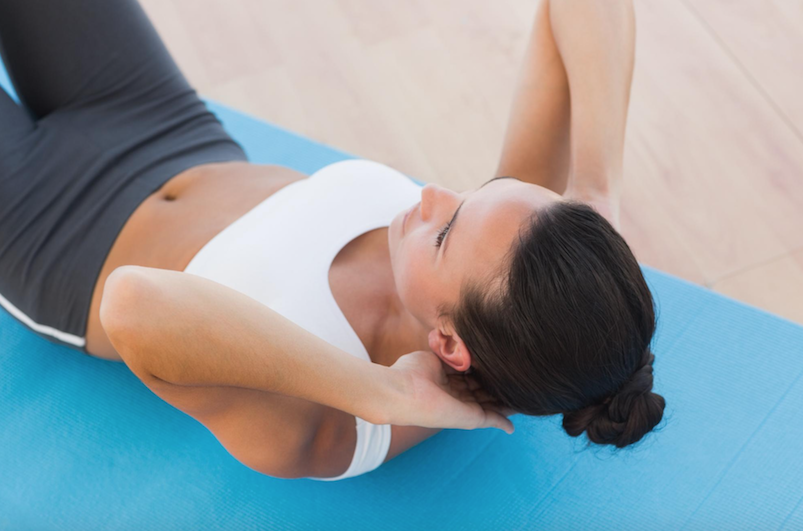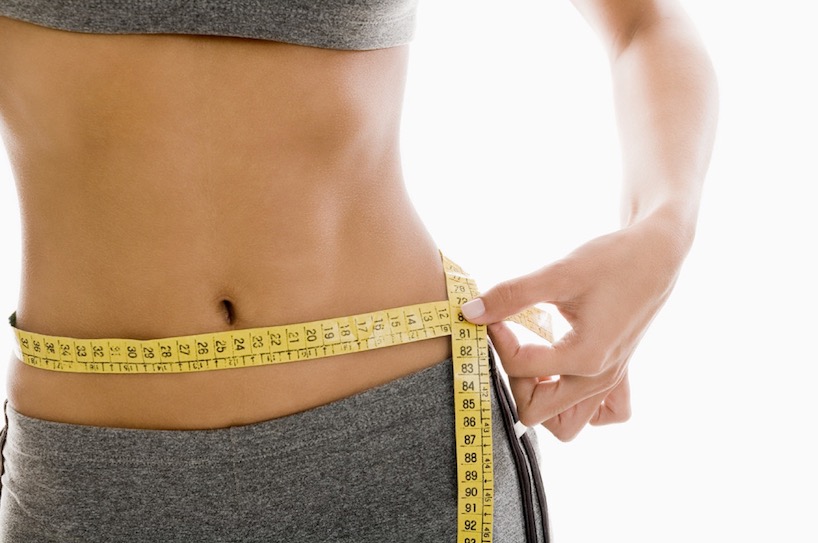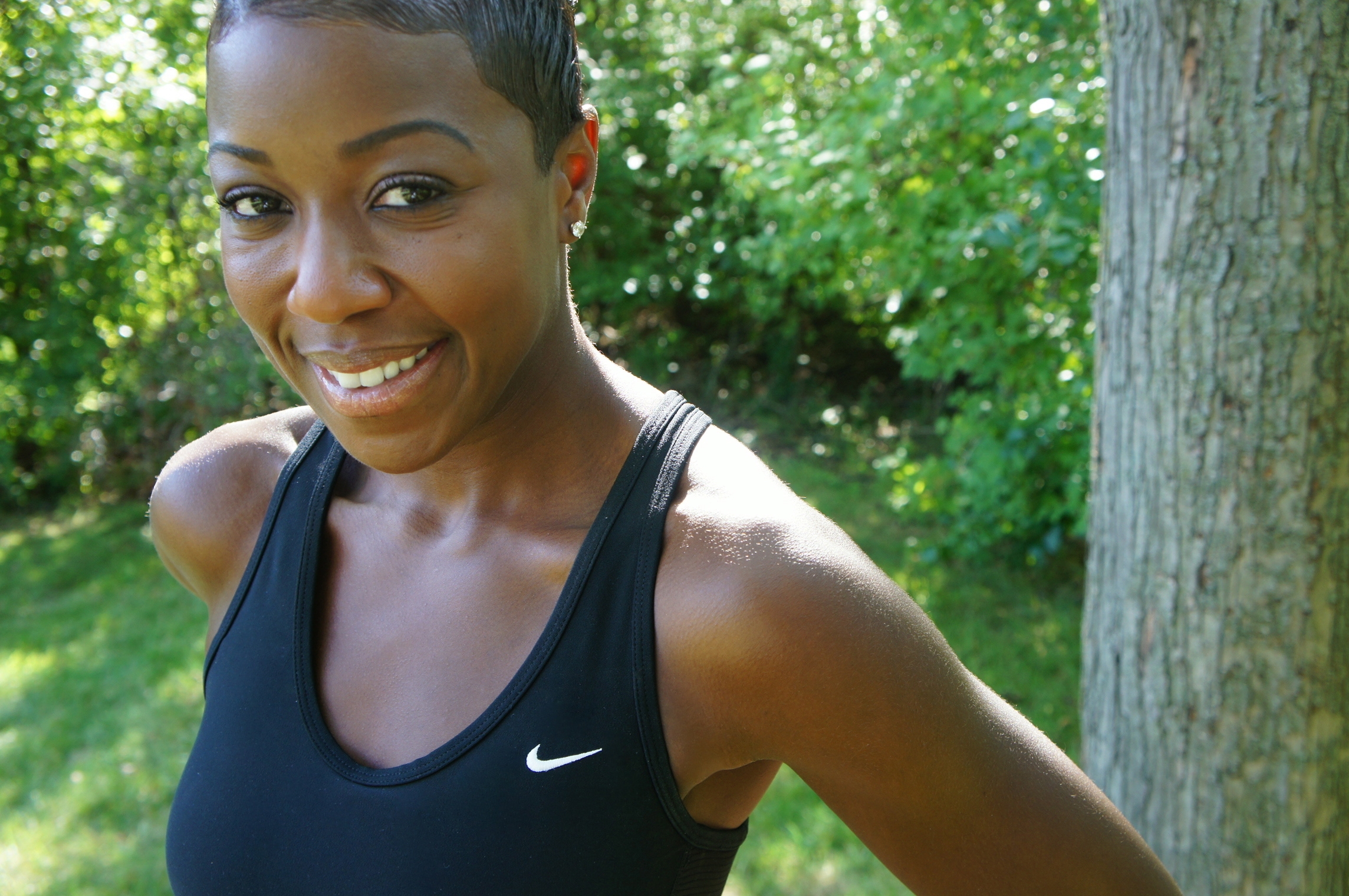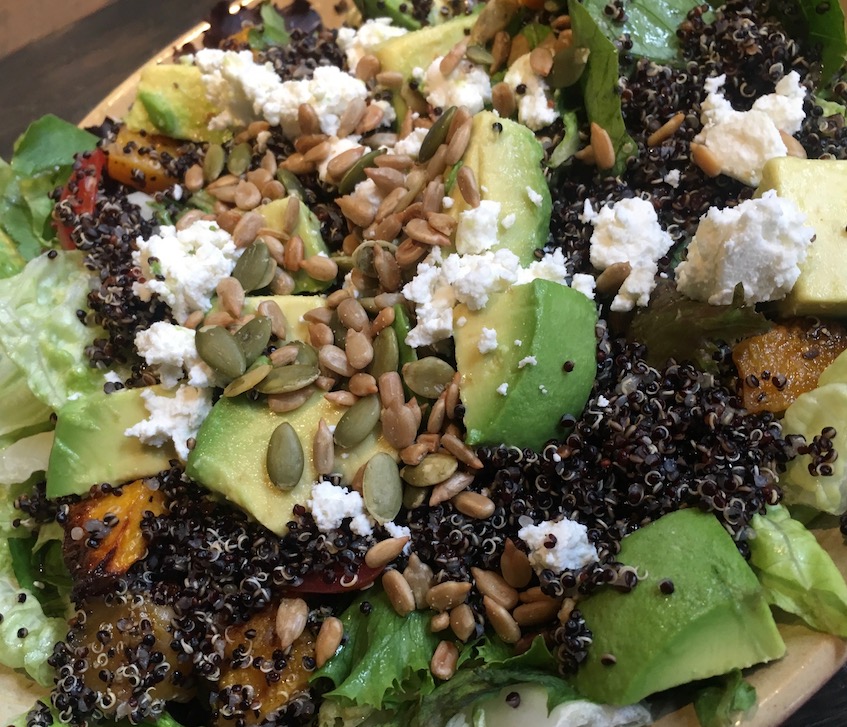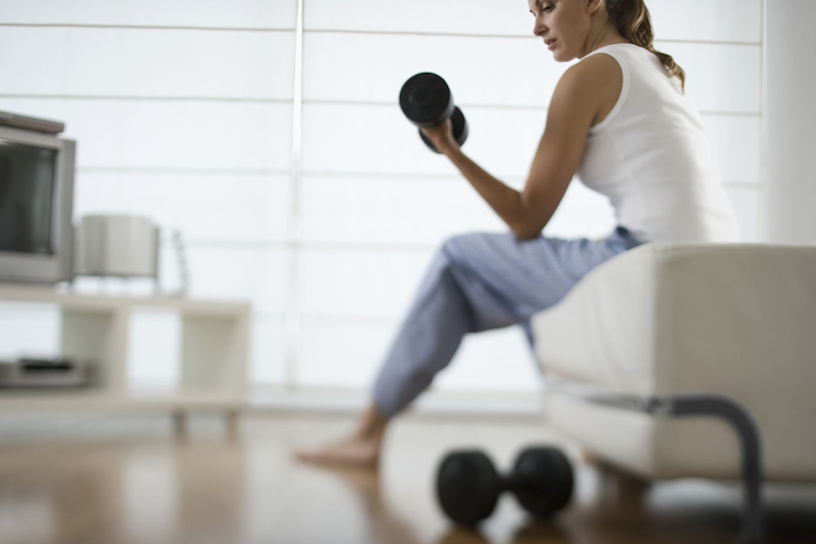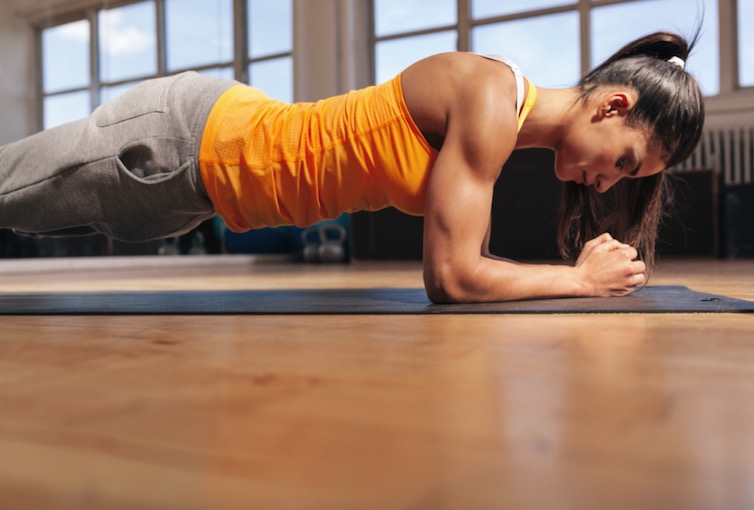Many people spend large chunks of their valuable workout time repeatedly performing trunk-flexing exercises like sit ups and leg raises in an effort to develop sexy, flat abdominal muscles. Generally speaking, these are the superficial muscles that people can see like the rectus abdominis (“six pack”) and obliques (those “hands-in-pockets” looking muscles underneath the love handles).
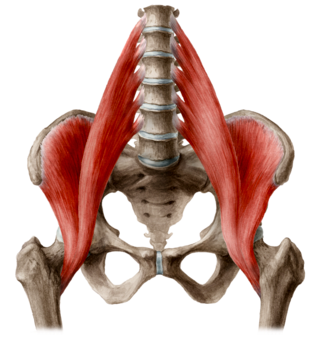 Unfortunately, when performed in excessive amounts, these exercises can do you way more harm than good.
Unfortunately, when performed in excessive amounts, these exercises can do you way more harm than good.
Related Article: Why Exercise Alone Won’t Get Rid of Belly Fat
Due to the body position and motion that’s required, sit ups, leg raises and similar exercises inherently cause shortening and tightening of deep-seated core muscles, especially the hip flexors (iliopsoas or inner hip muscles).
These muscles aren’t visible to the naked eye and can’t easily be felt since they are located beneath the abdominal muscles in front and the spinal muscles in back.
While the muscle fatigue that occurs when performing trunk-flexion exercises is generally associated with the abdominal muscles, the hip flexors are actually performing the most work. Repeated contractions of these muscles is what causes them to become short and tight.
Over time, shortening and tightening of the hip flexor muscles can inhibit adequate lengthening, oftentimes, leading to faulty posture, lower back pain, hip and groin pain, and limited mobility (shortened walking and/or running stride). Much of this occurs because the opposing muscle groups in the back region of the hips (lower back muscles, gluteal muscles, and hamstrings) tend to become lengthened and weak.
Related Article: Causes of Low Back Pain: Can Exercise Help?
Now, if you choose to regularly perform core work that’s inclusive of sit-ups, leg raises and the like, be sure you’re also stretching the hip flexors and other deep-seated core muscles. You should also make an effort to strengthen the opposing muscle groups in the back region of your hips with resistance training. Here are five exercises you can perform to do this most effectively.
Ball Squat
The ball squat strengthens the quadriceps muscles that make of the front of your thighs. These muscles support most movements carried out by the deep hip flexors. The ball squat is also great for strengthening the gluteal muscles that make up your buttocks and the hamstring muscles that make up the back of your thighs.
To perform this exercise, start by standing with your feet about hip- or shoulder-width apart and place an exercise ball behind your back and against a sturdy wall for support. This is your starting position.
For added resistance, you can hold a set of dumbbells at your sides. To complete the movement, bend your knees and lower your body into a squat position until your hips are at the level of your knees or slightly above. Your torso should remain straight. You should perform 1-3 sets of 8-15 repetitions of this exercise at least 2-3 days per week.
Lunge
Lunges primarily work the gluteal muscles but they’re also great for strengthening the quadriceps and hamstrings. To perform lunges simply place your feet about shoulder-width apart, put your hands on your hips and then take a step forward (approximately 1½-2 feet) while keeping your torso as straight and upright as possible.
Next, lower your body to the point that your front thigh is essentially parallel to the floor and then return to the starting position. It’s important that you don’t let your knee go in front of your toe at any point during this exercise. You can work one leg at a time or alternate legs. Either way you should perform 1-3 sets of 8-15 repetitions of this exercise at least 2-3 days per week.
Related Article: The Secret to Great Abs
Stiff-Legged Deadlift
The stiff-legged deadlift strengthens the hamstrings as well as the lower back and gluteal muscles. To carry out this exercise, you’ll need either a barbell or a set of dumbbells. To start, position your feet about shoulder-width apart with your knees slightly bent. Keeping your body weight balanced on your heels, lower your resistance down toward your ankles while sliding your hips back until you feel tension to a point that you can no longer move your hips further.
Once you reach this point, move your hips forward to return to the starting position. That’s it! You should perform 1-3 sets of 8-15 repetitions of this exercise at least 2-3 days per week.
Ball Backbend Stretch
Similar to a traditional “camel pose” the backbend stretch is great for targeting the deep hip flexors but it also stretches out the muscles of the chest (pectorals). To perform this stretch, lie face up with your body draped over an exercise ball and your knees bent with your feet flat on the floor. Next, extend your arms out to your sides as if you’re in an airplane position and then extend your legs out in front of you, rolling the ball out slightly.
Keep your chin up and your eyes staring straight up at the ceiling. Hold the position for about 30 seconds to 1 minute without bouncing while breathing as deeply as you can. I recommend performing this stretch for at least ten repetitions, 2-3 times a day, ideally after exercising or a leisure walk so that your muscles are nice and warm.
Lunging Stretch
The lunging stretch places primary emphasis on the deep hip flexors as well as the quadriceps and it’s super simple to perform. Position your body in the standard lunge position with your feet about shoulder-width apart, your front leg bent to about 90 degrees, and your back leg stretched out behind you. Keeping your torso as straight and upright as possible move forward until you feel a mild stretch in the front of your hip. That’s it!
You can perform this stretch for at least ten repetitions on each leg, 2-3 times a day when your muscles are warm, holding the position for 30 seconds to 1 minute without bouncing.
Finally, let me emphasize one more thing. If you’re regularly performing sit ups, leg raises and similar exercises to rid your body of stubborn belly fat, it’s important to understand that these exercises only target the abdominal muscles. They won’t do a thing for the fat that’s situated beneath and in front of them. Burning belly fat requires a combination of fat-burning cardio exercises and sensible eating. So, be sure these components of your lifestyle are also intact.

